Have you ever noticed your dog huffing and puffing? It’s a common occurrence among all breeds of dogs, but why exactly do they do it? As pet owners, we want to understand our furry friends better. To get an idea of what causes this behavior, let’s look at the phenomenon known as “huffing and puffing” in more detail. Understanding why your dog may be using this form of communication can help you respond appropriately and keep them safe when necessary. By understanding the reasons behind their huffin’ and puffin’, you’ll have a better understanding of how to interact with your pup in any situation!
What Is Dog Huffing?
Dog huffing is a type of vocal communication used by dogs to express their emotion. Dogs will make huffs or breaths of air loudly and forcefully through their noses, followed by a longer exhale. This sound is often louder than regular breathing and can range from a short noise to an audible growl.
Dogs also use huffs to show excitement. If your pup is huffing while being petted or playing, they may be trying to say “I’m happy!” or “This feels good!” [1]
Why Does My Dog Huff And Puff?
Huffing and puffing is a type of dog behavior that can be concerning to pet parents. It can sound like loud, noisy breathing or even snorting, and it often occurs when your dog is feeling stressed or anxious. Although huffing and puffing might seem alarming at first, it’s actually a normal communication tool for dogs.
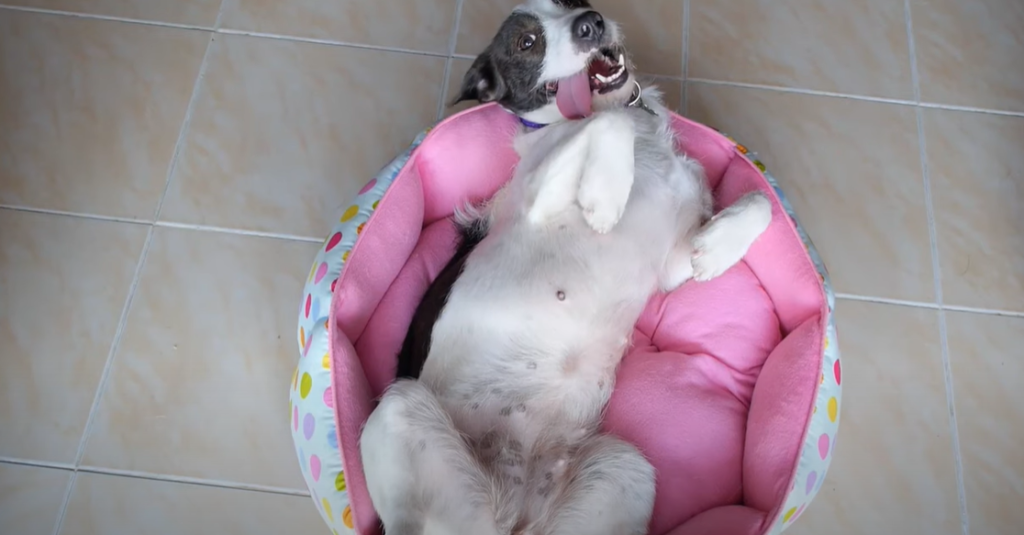
Dogs Huff And Puff To Cool Themselves Down
When your pup starts making those huffing and puffing noises, they are most likely trying to cool themselves down. Dogs don’t have the ability to sweat like humans do, so when their body temperature gets too hot, they will start panting heavily. This helps move warm air out of their bodies so that cool air can enter and help them cool down.
Some Dogs May Have Respiratory Problems
If your pup is huffing and puffing more than usual, it could be due to a respiratory problem. Dogs can suffer from asthma or bronchitis, just like humans can. Both of these problems are caused by inflammation in the lungs that makes it difficult for a dog to breathe properly. If you suspect your pup is having difficulty breathing, it is important to bring them to the veterinarian right away.
They May Be Anxious About Something
Dogs may huff and puff when they’re feeling anxious or stressed. This behavior can be triggered by something new or unfamiliar, such as a move to a new home, the arrival of a new pet or person in the house, or being around unfamiliar people and animals. If your dog is huffing and puffing, pay attention to their body language.
They Could Be Excited
If your pup is happily huffing and puffing, it could be a sign of excitement. It’s not unusual for some dogs to express their enthusiasm with a few gusts of air. When this is the case, you may notice the huffing and puffing accompanied by other signs of excitement like wagging tails, jumping up, or panting.
They’re Trying To Get Your Attention
Dogs are incredibly attuned to their owners, and they’ll use huffing and puffing as a way to grab your attention. Maybe you’re not giving them enough attention, or maybe they just want something from you (like a treat!). Whatever it is, don’t ignore the huffing and puffing. If you do, your dog may resort to other behaviors like barking or clawing in order to get your attention.
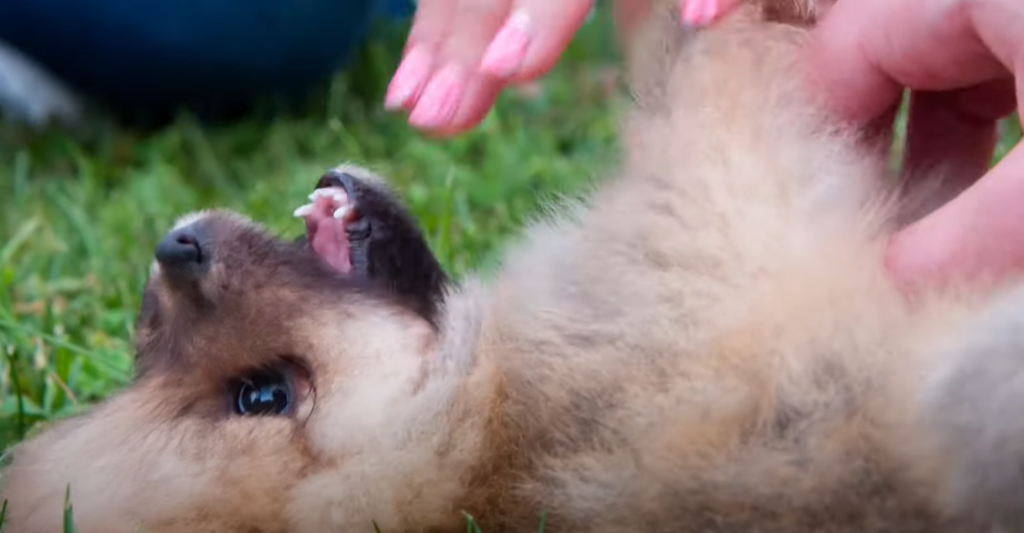
They’re Trying To Remove A Foreign Object From Their Mouth
Dogs may make huffing and puffing noises if they have a foreign object stuck in their mouth or throat. If they’re unable to remove it themselves, they’ll make these noises as a way of seeking help from their humans. If your pup makes huffing and puffing noises and you can’t spot anything in their mouth, it could be a sign of an underlying issue that requires medical attention.
It’s A Sign Of Aggression
When a dog huffs and puffs, it’s often a sign of aggression. A dog may huff and puff if he feels threatened by another dog or person. He may be trying to scare them away and assert his dominance over the situation. In order to prevent any potential conflict, it’s important to recognize the warning signs and stop the situation before it escalates. [2]
Is Dog Huffing Similar To Sighing?
It is sometimes difficult to tell the difference between a huff and a sigh. While both sounds are associated with frustration or displeasure, there are some subtle differences. A huff is a short, sharp exhale of air, often followed by a snort or grunt. It is typically louder and more aggressive than a sigh and is often accompanied by body language such as flattening the ears or turning away from you. A sigh, on the other hand, is usually a longer and softer exhale of air. It is often used as an expression of tiredness or resignation and may be accompanied by a shrug or heavy head-shake. [3]
Should You Be Concerned About Your Dog If They Huff And Puff?
Generally, huffing and puffing is a sign of respiratory distress in dogs. This condition can be caused by infections such as pneumonia, allergies, or even heart failure. It may also be a symptom of an underlying illness such as lung disease or even cancer. If your dog is huffing and puffing, it’s important to take them to the vet right away so they can be properly diagnosed and treated.
The huffing and puffing sound can also be a sign of excitement or anxiety. If your pup is panting heavily during playtime or when they anticipate something exciting (like going for a walk or getting a treat), then it’s likely just their way of expressing enthusiasm. However, if your pup is exhibiting signs of excessive panting and anxiety, it’s important to work with your vet or a certified dog trainer to identify the cause of their distress. [4]
How To Stop Your Dog From Huffing And Puffing At You?
First, it is important to identify what is causing the huffing and puffing. Is your dog anxious due to a new environment, or are they fearful of something in particular? Once you understand the source of the anxiety, you can work on a way to address it.
It’s also important to ensure that your dog is getting plenty of exercise and mental stimulation. Going for regular walks, playing games, and providing stimulating toys can help to keep your pup’s mind active and reduce stress.
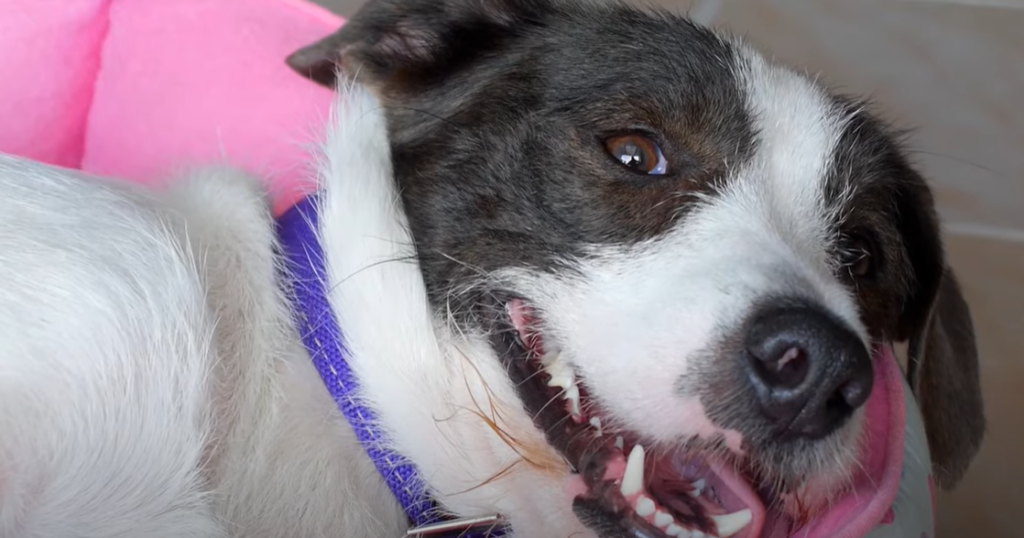
FAQ
Why do dogs make a huffing sound?
Huffing is a sign of displeasure or anger in dogs. It’s usually seen as an audible warning that something isn’t going the way they want it to. Dogs might huff when they feel threatened, or if someone is getting too close for their comfort. They might also huff if they’re trying to assert dominance over another dog or person. Huffing is a form of communication, and understanding why your dog is huffing can help you better communicate with them.
Why is my dog huffing and puffing so much?
If you’ve ever walked through a park with your dog and noticed them huffing and puffing, you may be concerned about what’s causing it. The good news is that your pup is likely just trying to cool themselves off on a hot day or let off some excess energy. Huffing and puffing can be a sign of stress, excitement, or even anxiety in some cases. Some dogs may even huff and puff when trying to communicate with you. Although it can sometimes be concerning, in most cases, your pup’s huffing and puffing is completely normal.
Why do dogs huff when they lay down?
Dogs huff when they lay down as a way to express their contentment. When dogs huff, they are actually releasing endorphins, which are hormones that make them feel good. This is why it’s often seen as a sign of contentment and pleasure in your furry friend. In addition to huffing when they lay down, dogs might also make a similar sound as they fall asleep or when being petted. It’s their way of saying “I feel really relaxed and happy right now!”
Why do dogs huff and sigh?
Dogs may huff and puff for a variety of reasons. It could be out of frustration or excitement, as a way to express their emotions, or even as a way to release pent-up energy. When dogs huff and puff, they are basically releasing stored up energy and/or expressing an emotion.
Why is my dog huffing like he can’t breathe?
When your dog is huffing and puffing, it may be due to a number of different reasons. First, your pup may simply be panting heavily. Panting is the way that dogs cool off since they are unable to sweat like humans can. Dogs will pant in order to keep their body temperature regulated when they become overheated. Heavy panting can also be a sign of excitement, fear, or anxiety.
What are the signs of respiratory distress in a dog?
Signs of respiratory distress in a dog can vary depending on the cause. Generally, common signs include difficulty breathing, rapid or shallow breathing, wheezing/huffing/panting, coughing and gagging, nasal discharge, and cyanosis (blue color to the tongue and gums). Other less specific symptoms may also be present, such as lethargy, restlessness, not eating or drinking well, and even vomiting. It is important to recognize such signs of respiratory distress in your dog so that you can seek veterinary attention if necessary.
How do you know if your dog trusts you?
One of the tell-tale signs that your dog trusts you is the sound of huffing and puffing. When dogs are content and relaxed, they may make a soft huffing or puffing noise, usually accompanied by a relaxed posture. It’s important to understand that this isn’t necessarily an indication of aggression; it’s actually a sign of trust. It’s your dog’s way of showing that he feels safe and secure in his surroundings, with you as his companion.
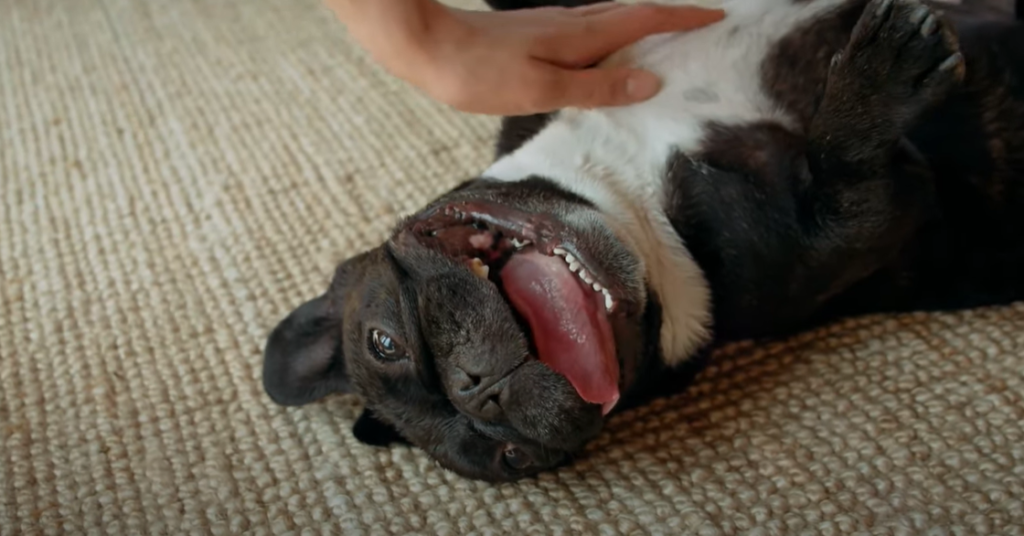
How do you know if your dog is depressed?
It can be difficult to tell if your dog is depressed, as dogs cannot express their emotions in the same way that humans do. However, there are certain signs and behaviors that may indicate depression in your pet. These can include a decrease in energy levels or enthusiasm for activities they once enjoyed, changes in appetite and sleeping patterns, excessive grooming or licking, lack of interest in interacting with people or other animals, and increased huffing or puffing when they are around people or other animals. All these behaviors may be signs that your dog is feeling down. If you think your dog is depressed, the first step is to consult your veterinarian.
Your vet can help determine the cause of the depression and provide treatment recommendations. In some cases, anti-anxiety medication or behavior modification may be needed to help your pet feel better. Additionally, providing plenty of mental stimulation and physical exercise can help keep your dog’s mind active and reduce stress levels. With the right care, you can help your pup get back to feeling happy and content again.
When your dog is mad at you?
Huffing and puffing is a form of communication that dogs use when they feel uncomfortable or threatened. This behavior is sometimes also seen as a sign of aggression, but it’s not always the case. Dogs may huff and puff in order to scare away a potential threat, or to express their dominance. It’s important to understand why your dog is huffing and puffing so that you can take the necessary steps to address the issue. If it’s due to fear or aggression, then talking to your vet about behavior modification might be the best solution. On the other hand, if it’s a sign of dominance, then providing structure and training can help. It’s important to remember that huffing and puffing is a form of communication – take the time to figure out why your dog is doing this before taking any action. This way, you’ll be able to address the underlying issue and ensure that everyone stays happy and healthy.
Useful Video: Why Is My Dog Puffing Their Cheeks?
Conclusion
Your dog’s huffing and puffing behavior can have a variety of causes. It can be a sign of excitement, stress, or discomfort. To determine the cause, it is important to pay attention to other indicators such as body language and environment. If your dog seems distressed or uncomfortable when huffing and puffing, take them to the vet for a check-up to rule out any medical conditions. With proper understanding and management, you can help your pooch feel more relaxed and content in their daily life.
References:
- https://thefactualdoggo.com/why-do-dogs-huff-and-puff/
- https://trainyourgsd.com/why-does-my-dog-huff-and-puff/
- https://pawleaks.com/why-does-my-dog-huff-at-me-7-surprising-reasons/
- https://petdogowner.com/why-does-my-dog-huff-at-me/

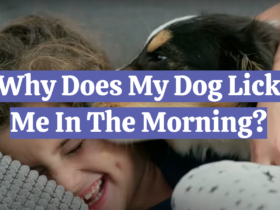
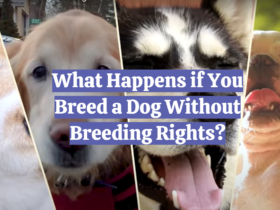
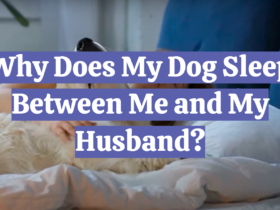
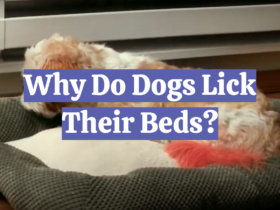
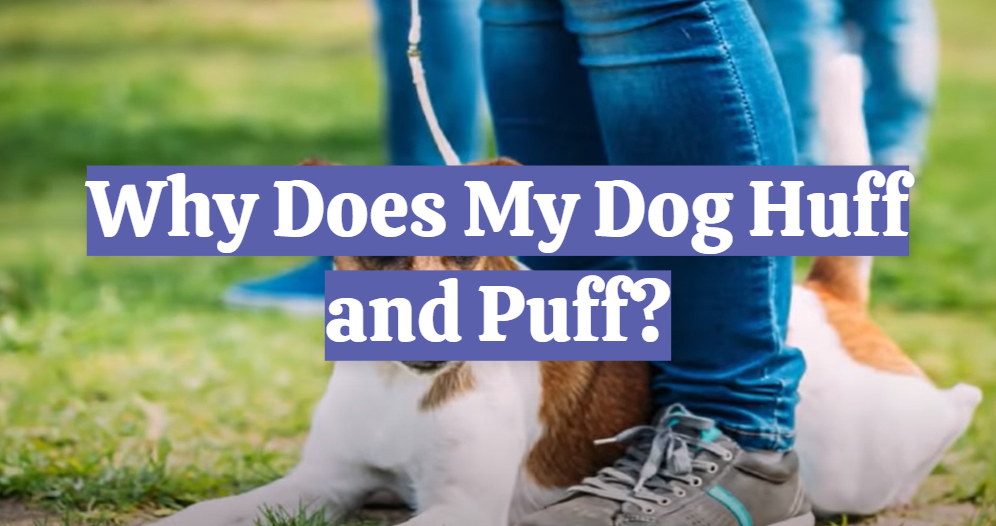

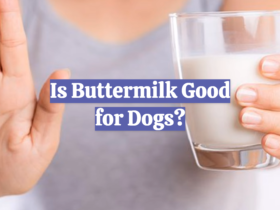
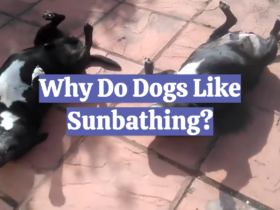
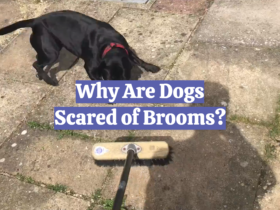
Observing my dog’s huffing and puffing, I’ve come to realize it’s often a sign of contentment and relaxation. Much like humans sigh when they’re at ease, dogs use huffing as a way to release tension and communicate a sense of comfort. It’s particularly noticeable after a good belly rub or during those moments when my pup is curled up in her favorite spot, letting out those happy sighs that reassure me she’s in her happy place.
My dog’s huffing and puffing seems to be her way of expressing mild frustration or impatience. For instance, when I take a bit too long to get her dinner ready or during the anticipation of going for a walk, she’ll let out these audible sighs. It’s almost like she’s saying, “Come on, let’s get going!” This behavior adds a humorous touch to our interactions, and it’s fascinating to witness how dogs use sounds to convey their feelings.
From my experience, huffing and puffing in dogs can also be a sign of exertion or fatigue. After a playful session or a long walk, my dog often huffs to catch her breath. It’s similar to how we might pant after physical activity. This behavior is a natural response to increased heart rate and helps regulate body temperature. Understanding this aspect has made me more attuned to recognizing when my dog needs a break or some cool-down time.
Sometimes, my dog huffs and puffs in a way that appears almost conversational. It’s as if she’s responding to a command or reacting to a noise she hears. This vocalization adds an extra layer to our communication, making our interactions more dynamic and engaging. It’s a reminder that dogs express themselves not only through body language but also through a range of vocalizations, each with its unique meaning.
Huffs and puffs in my dog seem to serve as a form of self-soothing, especially in stressful situations. During thunderstorms or fireworks, she tends to huff and puff while seeking comfort in her safe space. It’s a coping mechanism, and recognizing this behavior has allowed me to create a calm and reassuring environment for her during anxiety-inducing moments. Understanding the various contexts in which dogs use huffing helps strengthen the bond between us and ensures I can provide the right support when needed.
In my experience, my dog’s huffing and puffing often accompanies a sense of anticipation or excitement. When I bring out her favorite toy or gear up for a game of fetch, she starts huffing in a way that seems to convey eagerness and enthusiasm. It’s fascinating to witness how dogs use these vocalizations not only for relaxation but also to express their excitement and joy in specific situations.
I’ve noticed that my dog huffs and puffs more when she’s in a new environment or encounters unfamiliar scents. It appears to be a way for her to process and analyze the sensory information around her. This behavior is especially prominent during walks in different locations or when exploring new areas. It’s a reminder that dogs experience the world through their senses, and huffing might be a part of their cognitive process in adapting to new surroundings.
Huffing and puffing in my dog can also be a sign of attention-seeking behavior. If she wants me to play with her or give her some extra affection, she’ll make these distinctive sounds to capture my focus. It’s a charming way for her to communicate her desires and preferences, adding a layer of playfulness to our interactions. This behavior highlights the communicative nature of dogs and the importance of paying attention to the nuances of their vocalizations.
One interesting aspect of my dog’s huffing is its association with relaxation before bedtime. As she settles down for the night, she often lets out gentle huffs, signaling her transition into a restful state. It’s a comforting sound that has become synonymous with the winding down of the day, creating a peaceful atmosphere in our home. This behavior underscores how dogs, like humans, have rituals and signals for different phases of their daily lives.
My dog’s huffing and puffing can also be linked to her social interactions with other dogs. During playdates at the park, I’ve noticed that she uses huffing as a way to communicate her intentions or signal playfulness to her canine friends. It’s a fascinating form of canine language that goes beyond physical cues, demonstrating the intricate ways dogs express themselves and maintain harmonious social dynamics. Understanding the role of huffing in social contexts has enriched my observations of my dog’s behavior during group play and interactions with other furry companions.
I’ve observed that my dog often huffs and puffs when she’s feeling a bit under the weather or experiencing mild discomfort. It’s her way of expressing that something might be bothering her, whether it’s an upset stomach or a minor ache. Recognizing this behavior has allowed me to be more attentive to her well-being and prompt in seeking veterinary care when needed, ensuring her health and comfort are prioritized.
Huffing and puffing in my dog also seems to be a response to certain environmental stimuli, particularly strong or unfamiliar odors. If there’s a potent smell in the air, whether it’s from a nearby construction site or a pungent meal being cooked, she’ll huff and puff in a way that suggests she’s processing the scent. It’s a reminder of how dogs rely heavily on their sense of smell, and these audible reactions provide insight into their olfactory experiences.
One interesting aspect of my dog’s huffing is its role in communication during training sessions. When we’re working on new commands or tricks, she often huffs as a form of acknowledgment or to express her understanding of the task at hand. This interactive use of huffing showcases the cognitive abilities of dogs and how they actively participate in the learning process, making training sessions not only effective but also enjoyable for both of us.
Huffing and puffing in my dog can also be linked to her emotional state, particularly when she’s feeling anxious or uncertain. During thunderstorms or fireworks, she tends to huff in a way that suggests a combination of nervousness and a search for comfort. Recognizing this behavior has led me to implement calming strategies, such as providing a safe space or using soothing sounds, to help alleviate her anxiety during stressful situations.
My dog’s huffing and puffing can serve as a form of self-regulation during playtime. When the excitement reaches a peak, she often takes short breaks, huffing to catch her breath and signal a momentary pause. This self-imposed rhythm helps maintain a balance between energy expenditure and recovery, ensuring that play remains enjoyable and doesn’t escalate into overstimulation. Understanding this aspect of huffing has influenced the way I approach play sessions, allowing for a more harmonious and enjoyable experience for both of us.